Saab Was Way Ahead Of Its Time

So I’m driving along the other day and I notice a badge on the tailgate of the latest Lincoln Navigator that says “EcoBoost.”
That’s right, folks: the giant, bold, shout-out-loud Lincoln Navigator is now using an EcoBoost engine. The V-8 is gone. The big, brawny, “look at me” V-8 rumble has disappeared. Lincoln has now dropped that stuff in favor of turbocharging.
It would be one thing if it were the MKZ, which is a midsize sedan that looks sort of like a woman’s shoe turned upside down. That thing is turbocharged, and nobody really seems to care. It’s just another car, in a sea of cars, looking to eek out the best possible fuel economy.
But the Navigator! The giant, truck-like Navigator. Lincoln’s answer to the Cadillac Escalade, even though it debuted before there was a Cadillac Escalade. The huge flagship model of the Lincoln lineup; something Lincoln drivers across the world aspire to own, from airport limousine drivers to Lincoln dealership owner spouses. It’s now turbocharged.
And, of course, the Navigator isn’t the only recent luxury car to include a turbocharger. Other turbocharged luxury cars that have debuted in modern years include, well, basically all of them. Lexus, once the champion of smooth engines with low power and big displacement, now has a turbocharged NX and IS. Mercedes has all sorts of turbos. And Audi’s entire lineup might be turbocharged, for all I know. I cannot be sure of this fact because it’s impossible to spend more than 10 minutes on the Audi website without falling asleep.
It wasn’t always this way. Years ago, Mercedes brought us two types of engines: naturally aspirated engines and bigger naturally aspirated engines. Lincoln and Cadillac gave us V-8s. And Lexus offered Toyota engines that inexplicably ran on premium fuel, even when the Toyota version had no problem with regular. It was a great time.
Actually, it’s a great time now, too, because turbocharged engines are kind of fun. I especially like turbocharged engines from the mid-2000s because of how they operated. First, you put your foot down. Then, you did your taxes. Then, you were launched into a hedge somewhere in the next area code.
And this brings me to the point of today’s column, which is that Saab was way ahead of its time.
Many of you think of Saab as a fledgling Swedish automaker who had just one or two distinguishable products and could only afford to redesign its vehicles every decade or so. Of course, many of you think of Volvo in the same way. But Saab was like that, too.
But Saab’s biggest unique trait — more than its three-spoke wheels, more than its hatchback designs, more than the fact that the Saab logo faded off its emblems after three weeks of driving around in regular sunlight — was turbocharged engines.
Do you remember this? Back in the 1990s and 2000s, Mercedes-Benz and BMW and Lincoln and Cadillac and Lexus and Acura were all using big ol’ naturally-aspirated engines; the kind of engine where you’d walk up to your neighbor at a party and proudly announce your displacement like you’d share your newborn daughter’s weight at birth. My Acura has a three point five, you’d say, knowing full well your neighbor’s Lexus was only a pathetic three point oh. Or: My Cadillac has a four point nine. Or: My Mercedes has a five point six.
All of these things were acceptable to say back in the day when displacement ruled the earth.
And then there was Saab, off in the corner, somehow extracting even more power than its rivals but with far less fuel engine size. Whaddya got there, a neighbor would say, proudly stroking his new 4.0-liter, V-8-powered Lexus LS400. A two point three? And then he’d run away laughing as if his great dane had just put your entire Pomeranian in its mouth and gnawed on it a bit like a corn cob.
What he didn’t know, of course, is that your puny little two-point-three had 250 horsepower, or maybe 280, a function of Saab’s basic idea at the time that by God, there are a lot of horses running around Trollhattan, and they need to be captured and stuffed inside front-wheel drive sedans. Back then, that was considered unorthodox. Weird. Strange. Odd. “A turbocharger?” people would say. “What the hell is that?”
But now…
Well, now Saab is dead. Unfortunately, its ideas live on in virtually all modern cars: turbochargers are good. Smaller engines are great. Fuel economy is nice. Aerodynamics are fun. And as I look at today’s crop of luxurious front-wheel drive two point threes and two point ohs, and turbocharged this and EcoBoost that, I can’t help but think one thing: the only thing separating these cars from a Saab is the faded emblem.

More by Doug DeMuro
Latest Car Reviews
Read moreLatest Product Reviews
Read moreRecent Comments
- Jeff I have had about 6 recalls on my 2022 Maverick hybrid with most of them needing program updates other than that I really like my Maverick.
- Daniel J One thing to note: just because it's 240v doesn't mean the circuit can handle the load. How if a breaker trips and something important is on that breaker (lighting, sump pump... whatever). How if all the 240 receptacles are on the same circuit and two people charge at the same time?
- Redapple2 A slight twist of the topic. > A good reason to buy a car before they do a redesign (beyond teething problem for the newborns). Getting a car with the old tech. IE- vanishing Carplay. New subscription requirements. And doing away with switches and knobs and substituting a huge TV screen. I got a 2024 Forester because the 2025 moves everything to the new huge TV screen. A/C settings. Seat heat. All wheel drive modes etc. All in the TV screen. Some of it buried on page 3 of a submenu. No. Hard no. I m not participating in this.
- Lou_BC 2022 Colorado ZR2 diesel:1st year:I got a "low oil" warning the first few months of ownership. Dealer checked oil consumption every month for 6 months. No oil consumption. Probably incorrectly filled at factory and missed with PDI. AC did not work. Noticed that 2 weeks later during a hot spell. Local dealership lazy and just recharged system. They assumed GM factory screwed up. It leaked out and wasn't working after winter. Tech did a leak test and found problem. Sold without module that runs heated seats (chip shortage). I got a $50 refund and when parts showed up they inserted module. Repaired right before winter. DEF heater too weak to keep up with extended cold weather. ECU did threaten "limp mode". Dealer claims everything was working as designed. Multiple small dents in rear wheel wells close to plastic fender flares. Rock damage from driving on gravel roads. Factory wheel well liners are sh!t. GM spray in liner does not cover entire tailgate. Cheap bastards. 2nd year:DEF system froze up again. Service adviser said they sell more trucks in California than Canada. Get a heated garage. Rear brakes. Left rotor and pads fried at 50,000 km. Right side not quite to metal. I was told this was normal for Chevy trucks used offroad. Lost a rear shock guard. Poor design. Cheap. Diff vent line dislodged. Wheel design pretty but prone to rock chips and rock damage. Dented a rock slider on a big rock. Often find little pebbles in between plastic flares and metal fenders. Rear bumper seams also collect pebbles. Duratrac's are a decent all around tire but are too soft for extended time on gravel roads. Chewed up and very little tread at 60,000 km. Lost 1 tire to sidewall puncture. It definitely isn't as well built as my previous trucks. I seriously doubt I'd buy another Chevy. I like the truck overall. Love the diesel drivetrain.
- HotPotato Honestly VW should have bought Canoo too -- the Canoo is a much better rendition of a modern VW van than the actual VW EV van, which is just a standard generic Euro delivery van disguised by a vintage 2-tone paint job.



















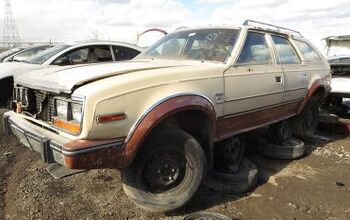
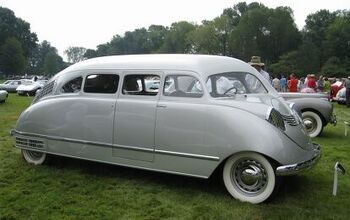
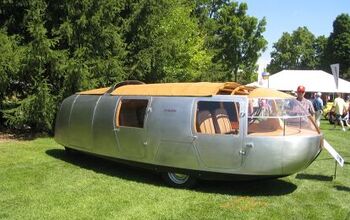
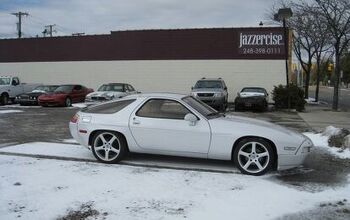
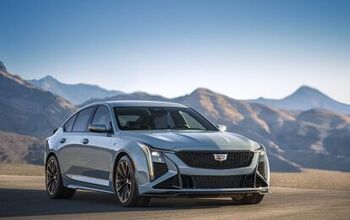



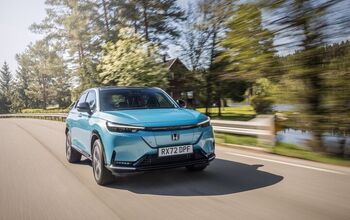

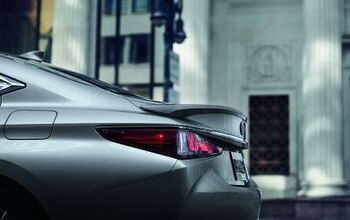



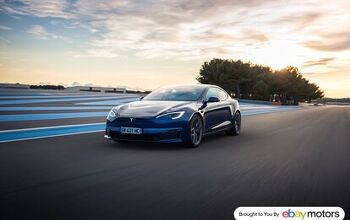
Comments
Join the conversation
This article said little as far as a decent point. And the fact that people would get around and talk about the displacement of their luxury cars seems highly debatable to me.
No, you wouldn't. You wouldn't mention displacement. You'd say it's a turbo. Blown. Like your wife, girlfriend won't do for you. Especially if he's a tool. That would shut him up and wipe the smile off his face. "Whaddya got there, a neighbor would say, proudly stroking his new 4.0-liter, V-8-powered Lexus LS400. A two point three? And then he’d run away laughing as if his great dane had just put your entire Pomeranian in its mouth and gnawed on it a bit like a corn cob."